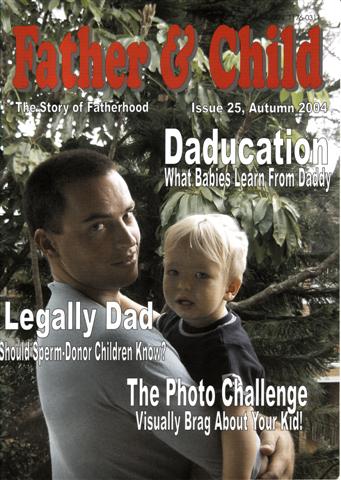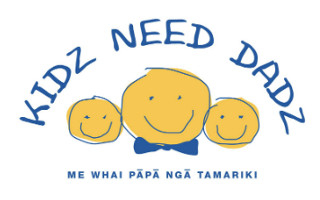Father & Child Magazine Issue #25
Parenthood redefined; Daducation; The Entertainment Coordinator; What’s in a Name; Meet proud father Daniel; Hunting role models.
Contents:
- Parenthood Redefined: Children of non-traditional ways of being conceived or born (e.g. sperm donor) currently have no right to know their biological parent. Mark Stephenson writes about the review by the Law Commission.
- What Babies Learn From Dads: What do babies learn from fathers ? Harald Breiding-Buss looks at the research.
- The Entertainment Coordinator: Keeping the kids occupied during the school holidays can be a real task. Pat Albertson writes from the front line.
- What’s in a Name: Naming your babies isn’t always a straitforward excercise. Hugh Joughin investigates.
- Meet Proud Father Daniel: Cover story in words and pictures.
- Hunting Role Models: Brendon Smith writes about other males who have shaped his life.
Editorial
Male Suicide
In New Zealand, more than 80% of all suicides are committed by men and, contrary to popular perception, it affects men in their twenties and early thirties as much as teenagers.
Yet, health officials insist that suicide is at least as much a women’s problem, because more suicide attempts are made by women than by men, and because depression is more common in women than in men.
That is a bit like saying doctors should stop putting stitches in large gashing wounds, because there are many more people who cut themselves on a piece of paper, and hence this deserves equal attention.
Suicide is death. Attempted suicide is still life. That men are more “efficient” in killing themselves doesn’t change the fact that they are dead forever after, and for that very fact they deserve special attention. If it takes less depression for a man to kill himself than for a woman, then we need to look out for depression especially in men, even if it is less common than in women.
Another popular excuse for not targeting male suicide specifically is that in virtually all Western countries there is a similar gap between male and female rates—the “biology” argument.
However, suicide rates have shifted considerably over the past 20 or so years. Older men are not as likely to kill themselves anymore as they used to be, wheras the rates for the 20-30 year olds (and teenagers) have shot up in the 80s. This, too has been an international trend.
The government has at least acknowledged this by developing the “All Ages” strategy to address suicide after many years trying to protect only young people.
But if suicide is simply biology, why should age rates ever have changed? It seems that, if men’s suicide rates react to social trends, then they can be influenced rather than merely taken for granted.
But while we are sorting out these rather academic questions, young men die, young children lose their fathers, not to mention those that will never be born.
And for what?
by Harald Breiding-Buss
Next: Parenthood Redefined





